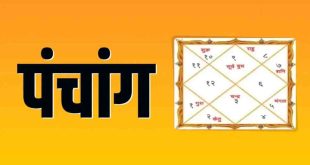 Santan Saptami 2023: Unlocking the Blessings of Motherhood
Santan Saptami 2023: Unlocking the Blessings of Motherhood
Introduction
Santan Saptami, a sacred Hindu observance, falls on the seventh day of the bright half of the Bhadrapad month according to the Hindu calendar. This special day is primarily observed by women with the aim of seeking blessings for motherhood, the well-being of their children, and their family’s prosperity. In 2023, Santan Saptami is slated to be observed on the 22nd of September. This veneration involves the worship of Lord Shiva and Goddess Parvati. Although both men and women can participate in this ritual, it is predominantly observed by women. It is believed that couples struggling with infertility can benefit from observing this vrat, as it may bless them with offspring and alleviate their sorrows, ushering in a period of joy and abundance.
The Ritual
1. Preparation
To commence this auspicious vrat, devotees gather the necessary items including incense, lamps, sandalwood, rice grains (akshat), betel nuts, coconuts, and offerings for the deities.
2. Puja Ceremony
The core of Santan Saptami is the worship of Lord Shiva and Goddess Parvati. Devotees decorate the altar with flowers and light incense and lamps. They offer sandalwood paste and akshat as a symbol of their devotion.
3. Naivedya
As an offering to the deities, a special dish is prepared. This dish typically consists of kheer (rice pudding) and pua (sweet deep-fried dumplings). It is offered to Lord Shiva and Goddess Parvati as a symbol of devotion and gratitude.
4. The Significance of Muktabharan
Santan Saptami is also known as Muktabharan, which means “the one who liberates.” This name signifies the belief that observing this vrat can liberate couples from the shackles of childlessness and bring them the joy of parenthood.
The Legend Behind Santan Saptami
Once upon a time, Lord Krishna advised King Yudhishthira to perform the Santan Saptami vrat to alleviate his mother Devaki’s distress due to her childlessness. According to the legend, in the city of Ayodhya, there was a Brahmin named Vishnudatta. His wife, Rupamati, had deep affection for Queen Chandramukhi. One day, both ladies went to bathe in the Sarayu River, where they witnessed other women performing a ritual dedicated to Lord Shiva and Goddess Parvati.
Intrigued, Rupamati and Chandramukhi decided to partake in the vrat as well. They tied sacred threads around their wrists to signify their commitment but later forgot about the vow. After their deaths, they were reborn as animals and then as humans. In their new human lives, Rupamati became the queen named Ishwari, while Chandramukhi retained her identity. Despite these changes, their bond remained strong.
Ishwari’s son, Bhushana, was born healthy and prosperous, while Chandramukhi’s son passed away at a young age. Filled with jealousy, Chandramukhi invited Bhushana and his siblings to a feast but secretly poisoned them. Miraculously, Lord Shiva and Goddess Parvati intervened, saving Bhushana’s life. He and his siblings were unharmed.
Upon learning of her wrongdoing, Chandramukhi confessed her jealousy to Ishwari. In turn, Ishwari revealed the forgotten vrat they had undertaken in their previous lives. Realizing the divine intervention, both women performed the Santan Saptami vrat with utmost devotion, eventually receiving the blessings of motherhood and spiritual fulfillment.
 Suspense Crime Sach Ka Dam
Suspense Crime Sach Ka Dam


